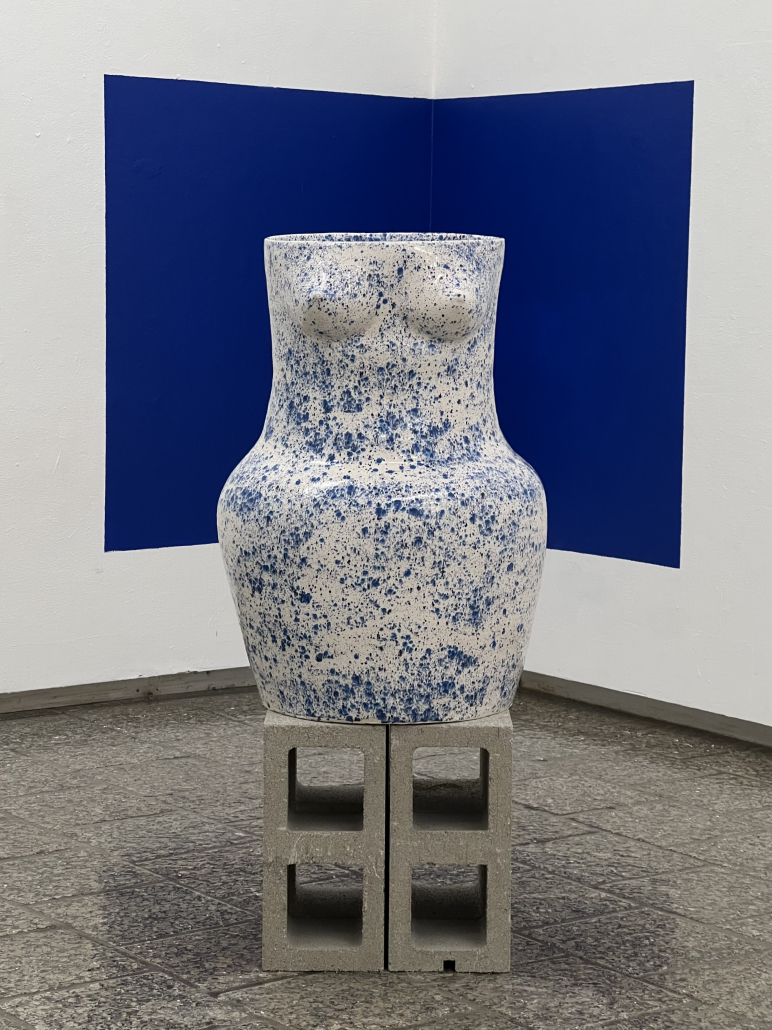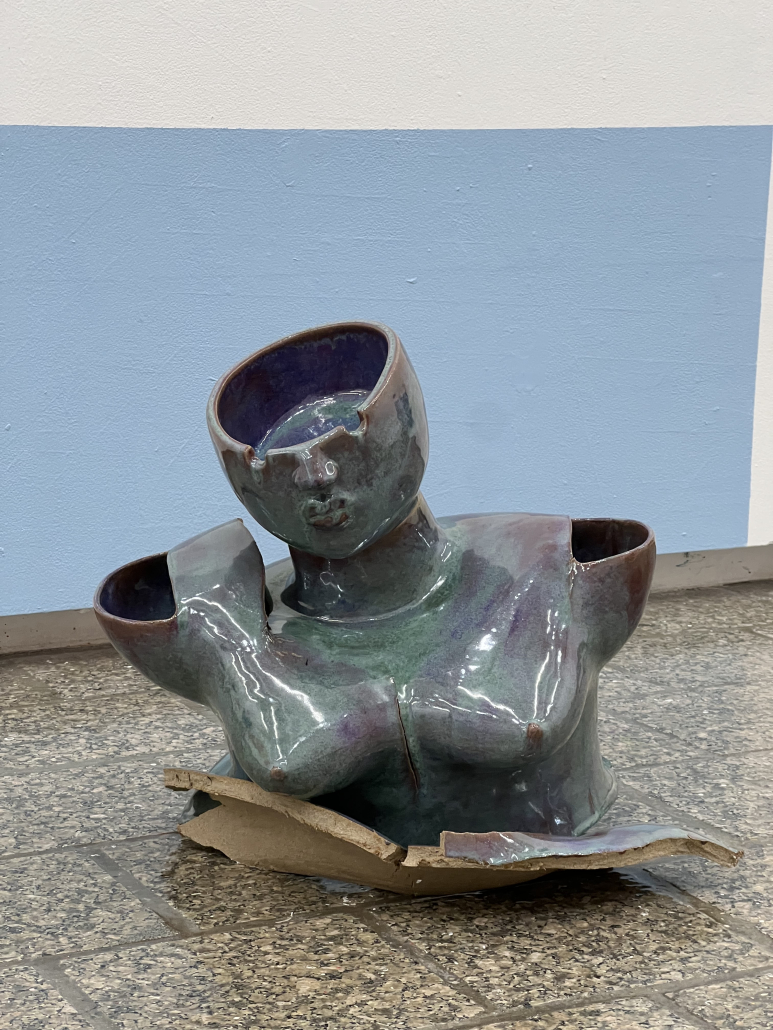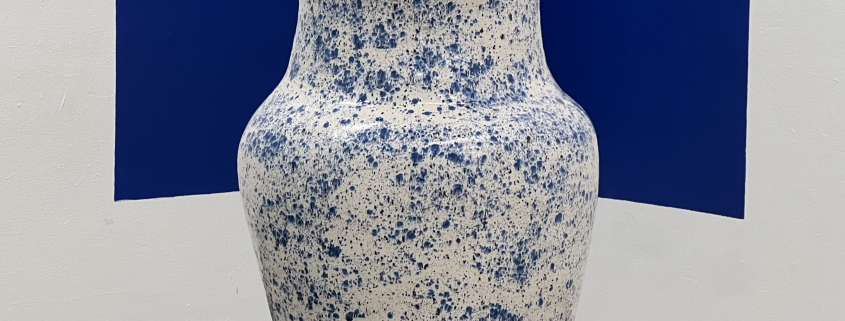“Divine Portals” transcends time, culture

For Yerchanig Sara Chakmakian, her Bachelor of Fine Arts exhibition is a direct reflection of her identity, passion for coil building and connection to an ethereal feminine energy. The “Divine Portals” exhibit, showcased in the Helen Lindhurst Fine Arts Gallery from Oct. 5 to 19, featured six vessels inspired by the female form in various ocean-inspired hues.
The show gave Chakmakian, a senior majoring in design, a chance to meditate on internal musings of culture and spirituality. The daughter of a Mexican mother and Armenian father, Chakmakian uses her artistry to keep the vibrant history of her heritage alive through her craft.
“I come from a mixed background, and we’re already so removed from our cultures because of genocide and displacement,” Chakmakian said. “Even though a lot of the history has been erased, art is a way for me to preserve my culture.”
Before crafting her BFA exhibition, Chakmakian constructed her senior thesis around coil pottery and how the medium serves as a “portal” between ancient techniques and contemporary life.
“Coil building is such a primal thing,” Chakmakian said. “Ceramics was the first synthetic material humans ever created, and they did it to survive. At first, it was in the home to store water and cook, but now ceramics is a huge industry. Even as a contemporary artist, I’m still working with the coil method.”
Roski Chair of 3D Design Alexis Zoto worked with Chakmakian to strengthen her thesis.
“We talked a lot about this idea that, when you’re making, you’re aware that what you’re doing has been done for millennia in every part of the globe,” Zoto said.
Chakmakian’s research led her to stories of indigenous societies that paid respects to water goddesses, and the strength of these celestial, feminine deities reminded her of her own upbringing and the importance of the women in her family.

“The indigenous societies believed that we came from these primordial waters, and that all life sources came from water,” Chakmakian said. “I think it just came intuitively to make the female form. It’s a direct result of my aunts and my mom and my grandma instilling that culture in me, and so I was really inspired by the divine energy.”
After having her gallery approved in late April 2022, Chakmakian worked tirelessly to craft an immersive, thoughtful exhibit. Thomas Mueller, who chairs 3D Art at Roski, noted that the opportunity for Chakmakian to have the entire gallery to herself is rare for undergraduate students.
“Not every student gets to do a show like this, and typically students will only get half of that gallery,” Mueller said. “It’s a lot of work. She was willing to embrace the risk, and I watched her really navigate it and rise to the challenge and put on this incredible show.”
During the 27-week-long process of crafting her pieces, Chakmakian’s missteps became blessings in disguise. At first, she wanted to customize wooden pedestals for her pieces, but steep lumber prices led her to look elsewhere. She settled on cinder blocks stacked on top of one another, adding contrast to her polished, curved ceramics.
“I wanted to make them look like they were floating in space, so I like how the cinder blocks are see-through in those little peek-a-boo windows. I also like that the squares are reminiscent of the really sharp color blocks in the back,” Chakmakian said. “It’s this interesting balance between feminine and masculine energy with the shapes.”
Chakmakian believes that due to her design background, her ability to think on her feet made the exhibit more personal and cohesive.
“[The cinder blocks’ symbolism] wasn’t intentional, but I think a lot of times you have this idea in your head and you put it in the gallery and all these conceptual things start kind of coming to life, whether you anticipated for that or not,” Chakmakian said.
“Every class she’s had or every project she’s had, she always takes a risk,” Mueller said. “I’ve really seen her grow, not just in her skills, but in the way she thinks about art and really embracing ideas outside of our comfort zone and using those ideas to push her unique voice forward.”
Despite the ancient origins of her coil building technique, Chakmakian made sure to keep her exhibit grounded in the 21st century. Adding bright orange and blue color blocks to frame her ceramics (another Plan B that ended up elevating her work) was one of Chakmakian’s finishing touches to “Divine Portals.”
“With our generation, I was thinking about what the exhibit would look like on a phone camera,” Chakmakian said. “People were tagging me in all these photos during my open ceremony, and I loved how each picture was so unique because of the blocks. They looked different in so many pictures because everyone was looking from different angles.”
“Sara is really a fascinating practitioner because she brings fine art and craft together. There was a really interesting conversation about color theory and activating a space, and how she engaged the space with the color blocking on the walls,” Zoto said. “It’s exemplary. It’s a fine example of the very best that Roski has in terms of combining art and design.”

